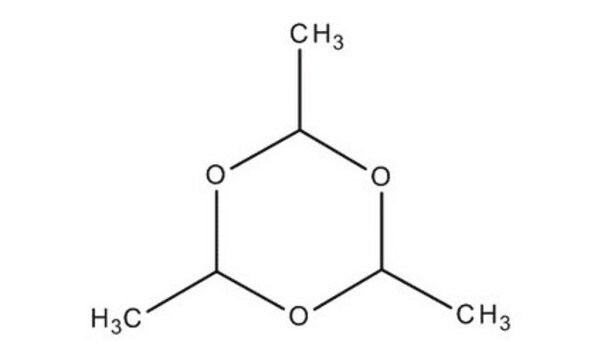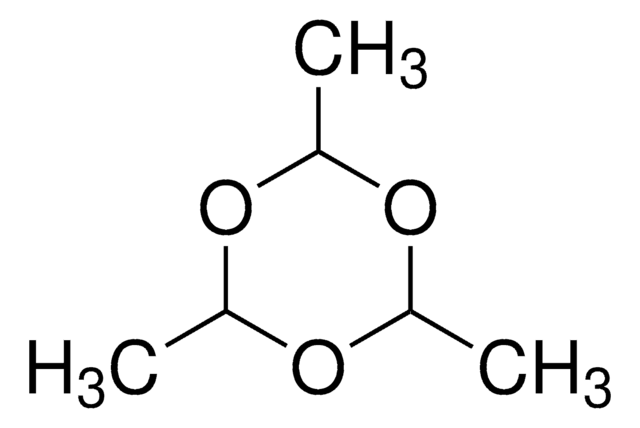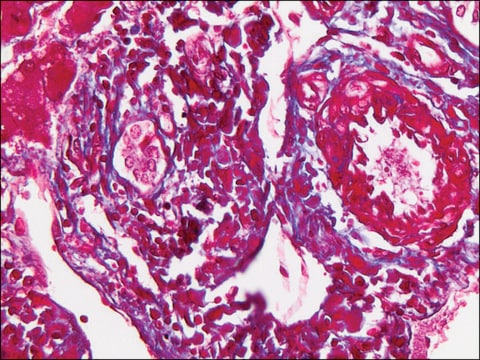P5520
Paraldehyde
≥97%
Sinónimos:
2,4,6-Trimethyl-1,3,5-trioxacyclohexane, s-Trimethyltrioxymethylene, Acetaldehyde trimer, NSC 9799, Paracetaldehyde
About This Item
Productos recomendados
Análisis
≥97%
control farmacológico
USDEA Schedule IV
densidad
0.994 g/mL at 20 °C (lit.)
cadena SMILES
CC1OC(C)OC(C)O1
InChI
1S/C6H12O3/c1-4-7-5(2)9-6(3)8-4/h4-6H,1-3H3
Clave InChI
SQYNKIJPMDEDEG-UHFFFAOYSA-N
¿Está buscando productos similares? Visita Guía de comparación de productos
Aplicación
- Modified Sanford reaction
- Synthesis of N-arylbenzoquinaldinium derivatives with antimicrobial activity
- Hydroformylation of alkenylamines
- Studies of molecules with inhibitory activity against HIV-1 integrase
- Irregular Wittig reactions for the formation of α-hydroxyketones
Acciones bioquímicas o fisiológicas
Palabra de señalización
Warning
Frases de peligro
Consejos de prudencia
Clasificaciones de peligro
Flam. Liq. 3
Código de clase de almacenamiento
3 - Flammable liquids
Clase de riesgo para el agua (WGK)
WGK 1
Punto de inflamabilidad (°F)
75.2 °F - closed cup
Punto de inflamabilidad (°C)
24 °C - closed cup
Equipo de protección personal
Eyeshields, Faceshields, Gloves, type ABEK (EN14387) respirator filter
Certificados de análisis (COA)
Busque Certificados de análisis (COA) introduciendo el número de lote del producto. Los números de lote se encuentran en la etiqueta del producto después de las palabras «Lot» o «Batch»
¿Ya tiene este producto?
Encuentre la documentación para los productos que ha comprado recientemente en la Biblioteca de documentos.
Los clientes también vieron
Nuestro equipo de científicos tiene experiencia en todas las áreas de investigación: Ciencias de la vida, Ciencia de los materiales, Síntesis química, Cromatografía, Analítica y muchas otras.
Póngase en contacto con el Servicio técnico









